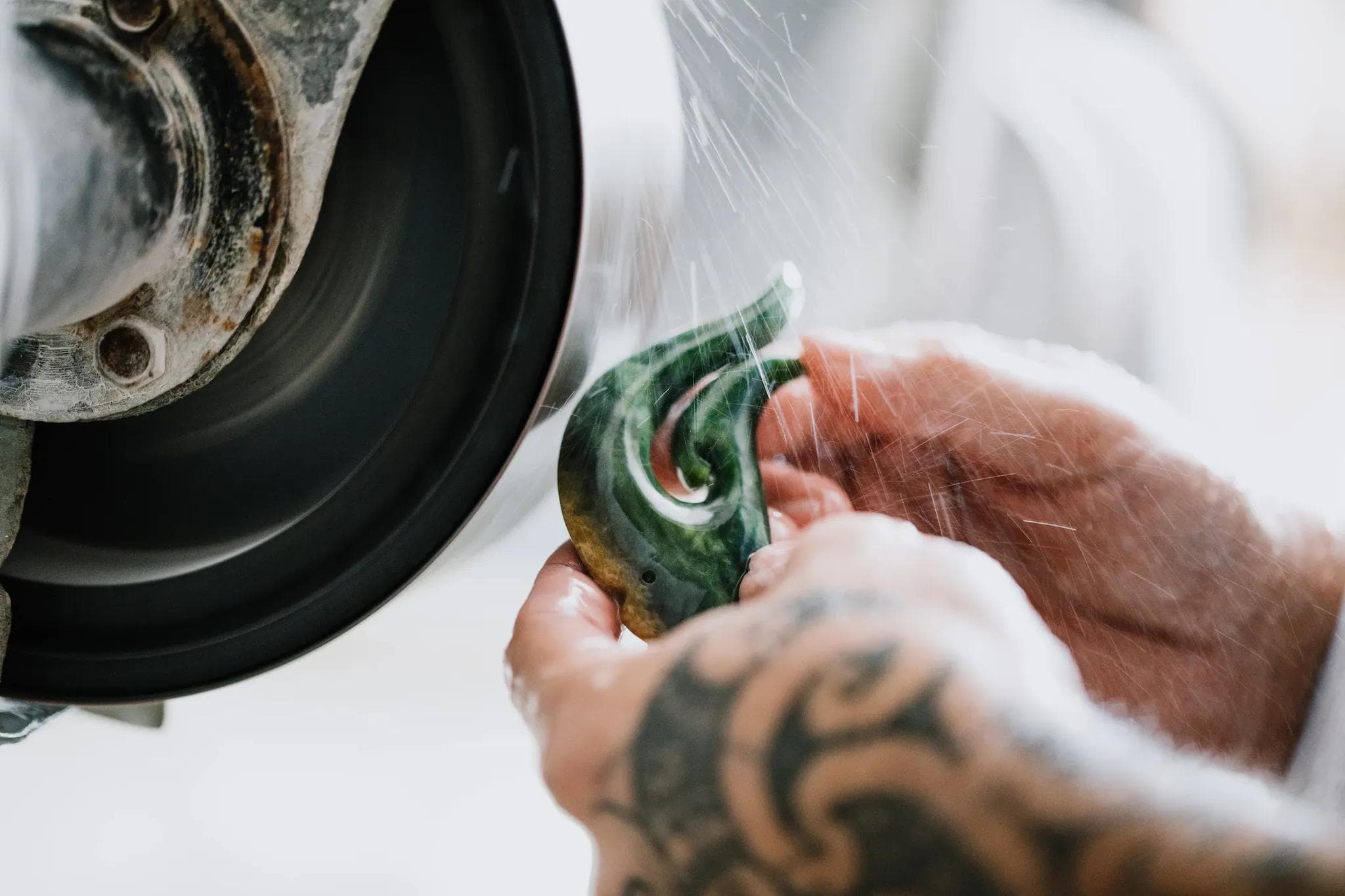
While modern tools have allowed more complex designs to be made and the art of crafting jade to become more efficient, carving today remains an intensely painstaking and exacting art form. Every piece crafted in our workshop is carved by hand, and finished by hand - there is no mass production. Our carvers appreciate the rarity and value of the stone they’re working, always taking extreme care not to waste any.
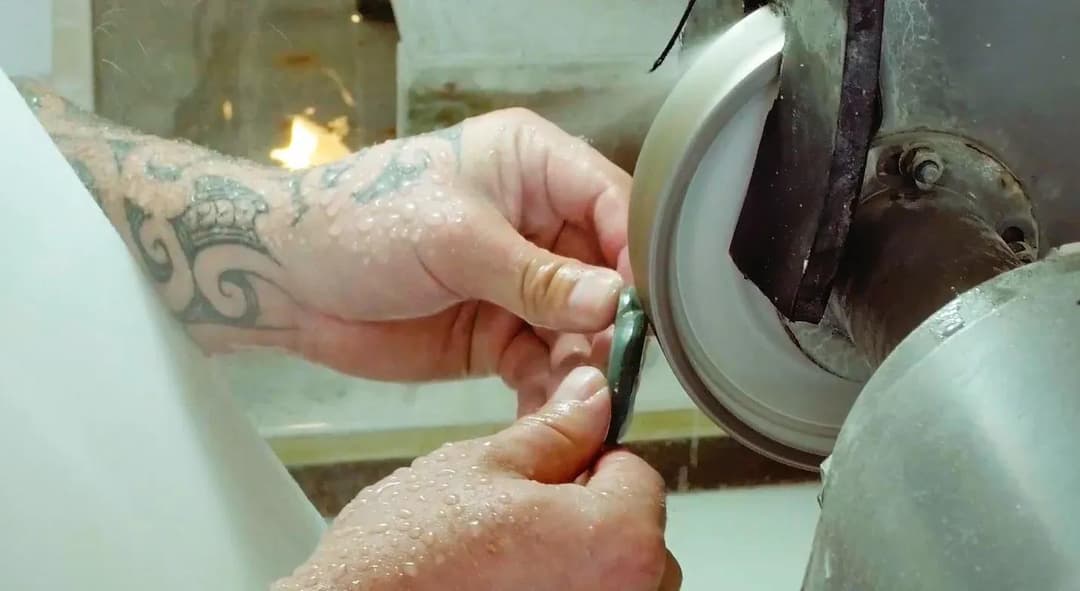


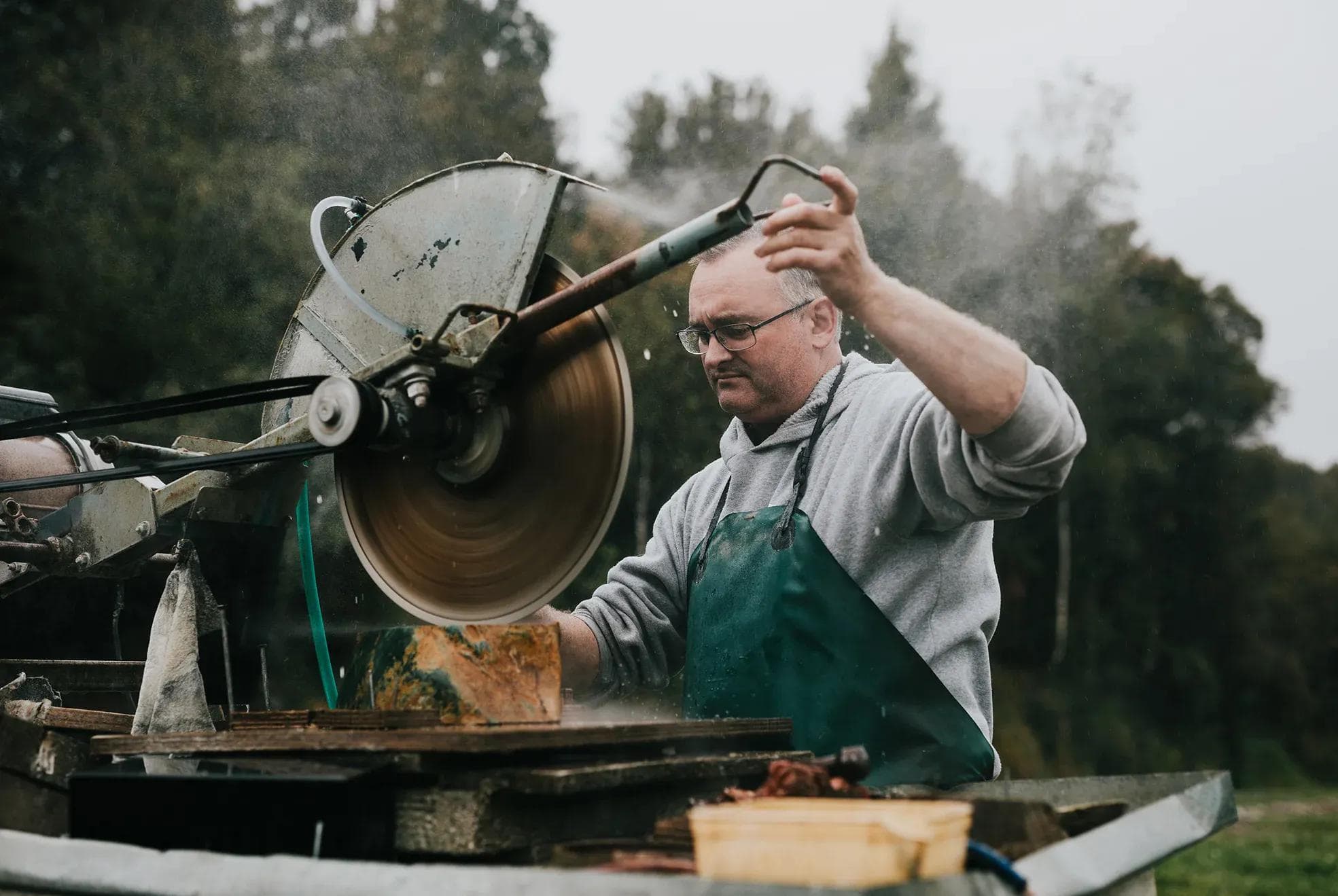

With the design in place, straight lines are drawn as close as possible to the sketch, creating a rough shape to be cut out with a diamond-tipped trim saw. The small off-cuts from the stone are used to make smaller pendants, earrings and bracelets, ensuring no jade is wasted.
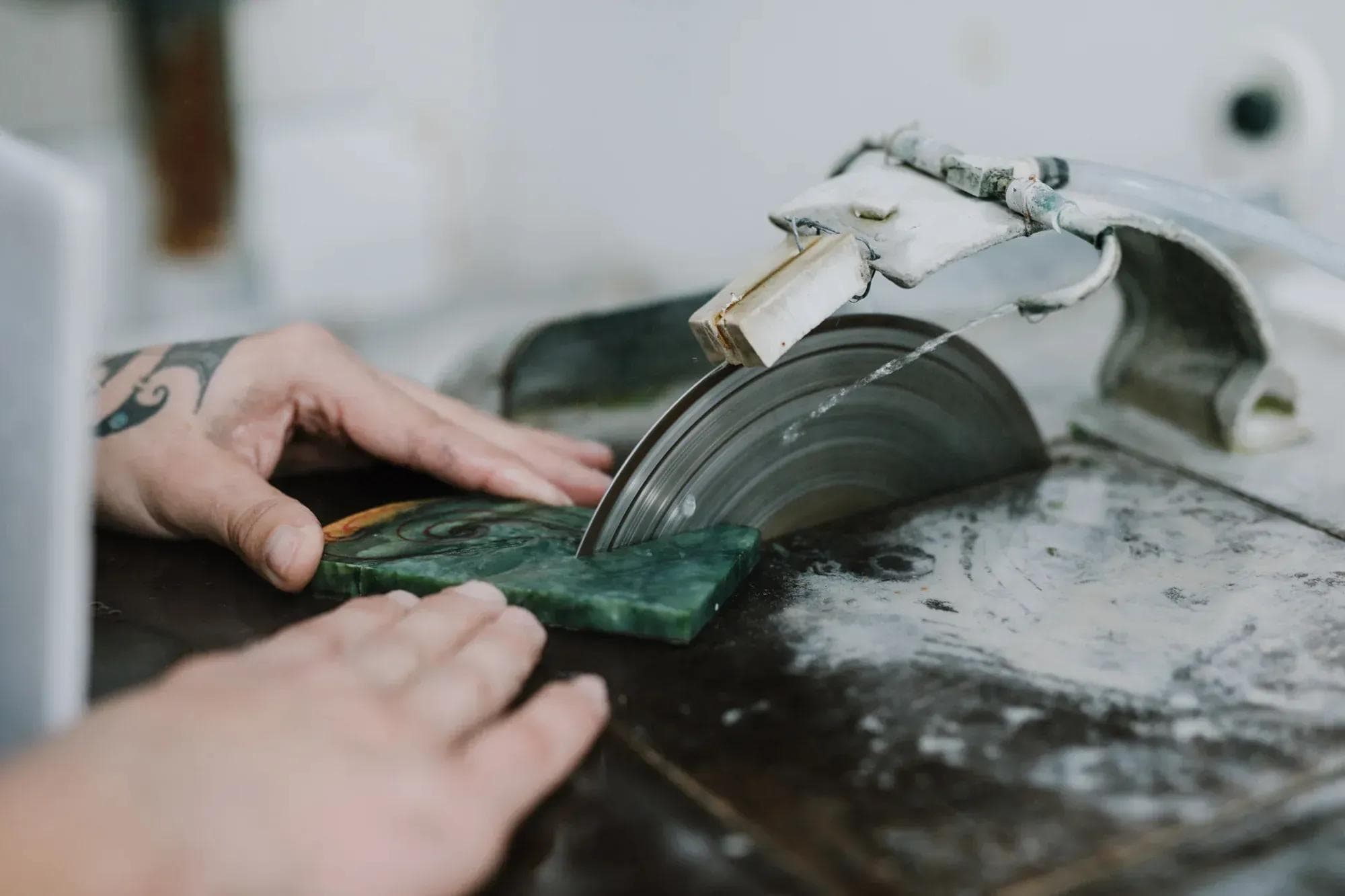
Carvers then use the diamond-plated wheels on the grinder to remove the bulk of the stone around the design and begin shaping the piece. Maintaining the flow of the design during grinding requires great skill and experience.
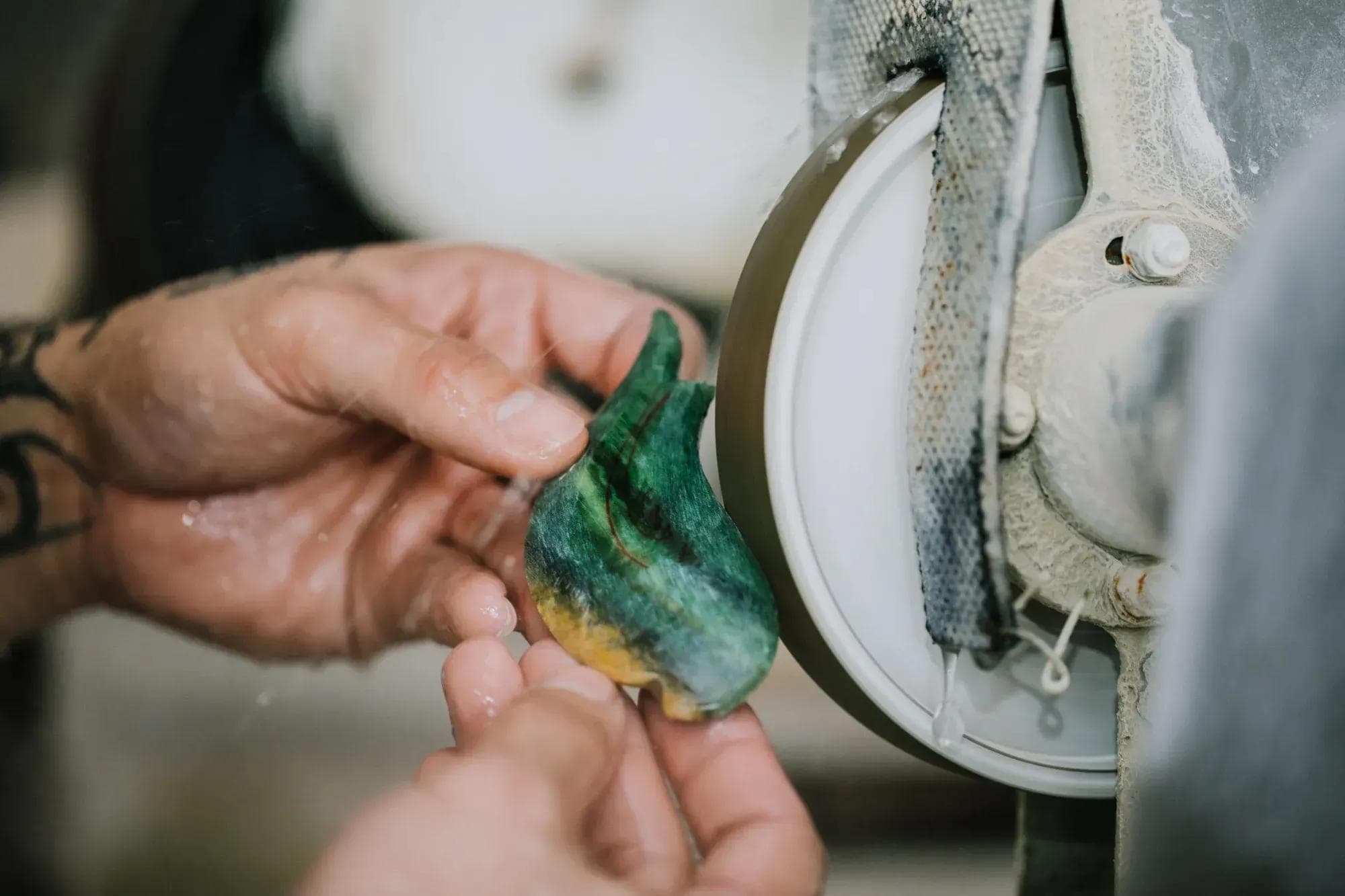

Sanding is an essential part of the finishing process, removing scratches and cuts to create a smooth surface. Sanding machines are used for efficiency, but hand-sanding methods such as stropping are also used to achieve smooth edges in areas that machines cannot reach. In the final stage of the carving process, a carver will decide how they want to finish the piece by choosing a matte or gloss finish. To achieve a gloss finish, finer grades of abrasive are required and a leather wheel and diamond polishing compound are used.
